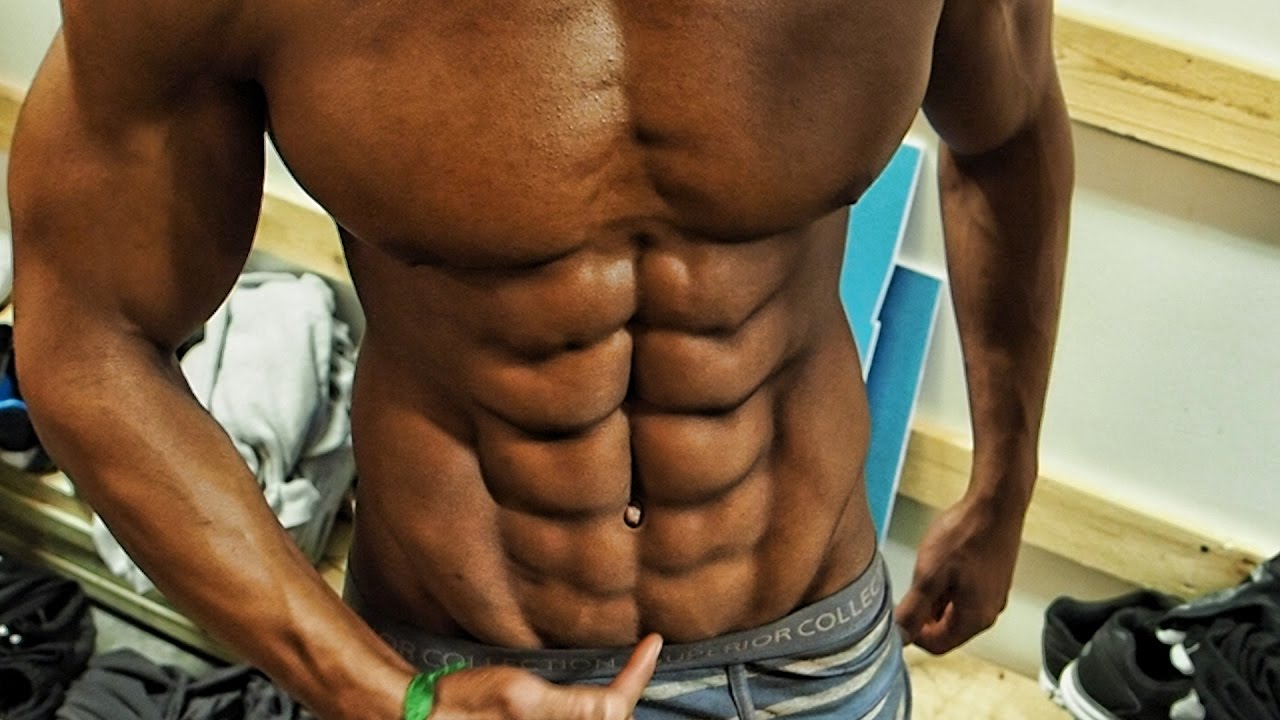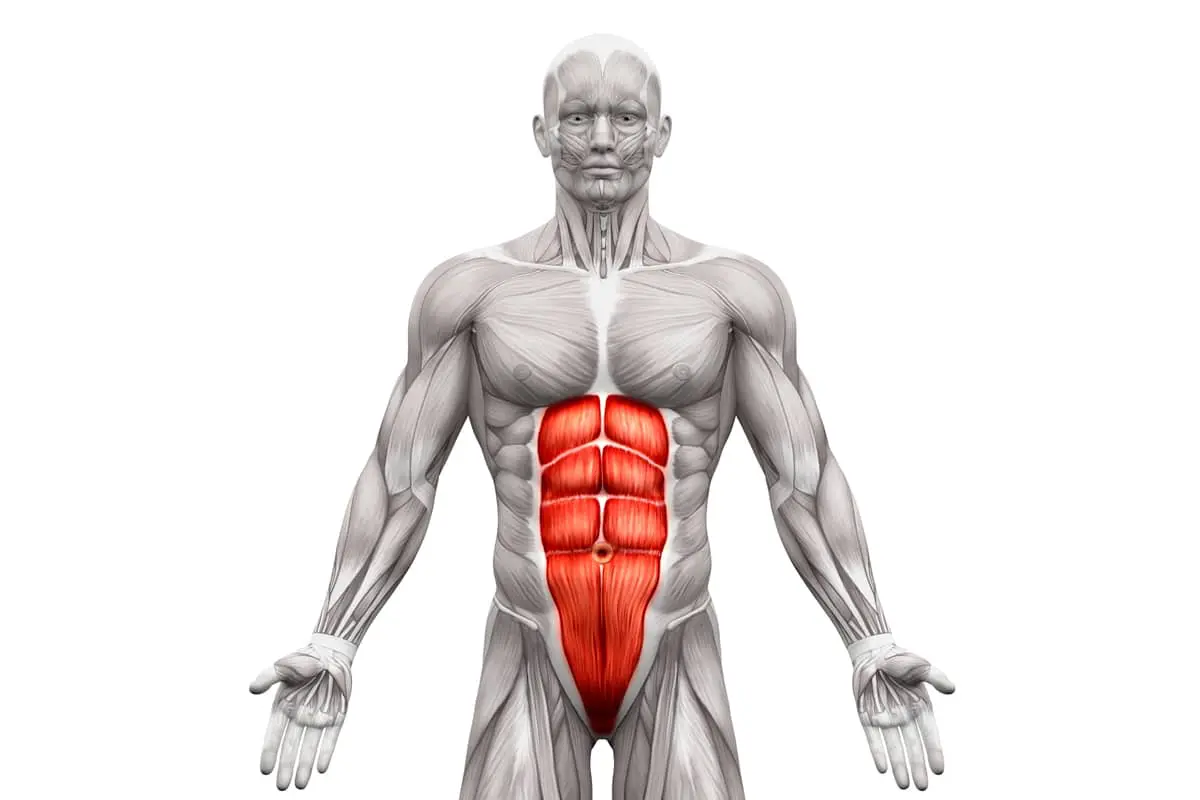
The best online fitness resource you'll ever need. We filter out the BS to ensure you meet your health and fitness goals!

The best online fitness resource you'll ever need. We filter out the BS to ensure you meet your health and fitness goals!

How do you get 10-pack abs? Simple. Have them already, or have different parents.
Now, the abs may be undeveloped, or already pretty jacked and just lurking underneath a layer of adipose tissue that was hard-earned by overachievement in the kitchen. Who knows? Maybe you do have a potential 10-pack.
Whether you’ve got 2, 4, 6, 8, 10, or even 12—yep, a few lucky folks have 12—we’re going to unpack the best exercises for abs you’ve got available, and the science behind the best ab exercises to do to develop what you’ve got available.

You can’t make sense of ab work without first understanding ab anatomy. The anatomical structure explains why 10-pack abs may or may not be achievable for an individual, but a 4-pack, 6-pack, or 8-pack might be.
The rectus abdominis muscles are actually two parallel muscles that attach at the pubic bone on the pelvis and the lower middle edge of the rib cage (specifically the xiphoid process—the notch at the base of the breast bone—and the fifth through seventh ribs). The seam created by connective tissue in the midline is called the linea alba and the horizontal separations are called tendinous intersections.
It’s the number of tendinous intersections that determines your ab count. Credit the number of tendinous intersections if you have 10-pack abs.
The abs are responsible for flexing the spine, curving it forward. They also play functional roles in breathing, and they help to hold your internal abdominal organs in place and protect them, and they add stability to the spine.
Things the abs don’t do:
Those last two points—that the abs (again, specifically the rectus abdominis) neither twist the upper body nor raise the legs become important to remember if you’re going to maximize your training for that washboard look…whether it turns out to be a 10-pack or a number south of that. (Or who knows…maybe you’re one of those 12-pack people.)
No matter what the bro literature says, a person can’t “target” their upper, middle, or lower abs, because there’s no such thing as upper, middle, or lower abs.
To have upper, lower, and middle abs would require attachments on either end of an upper, lower, or middle ab…which of course isn’t the case.
Work the entire muscle over a full range of motion and the individual muscle bellies will develop.
We’ll describe the three best exercises for developing the rectus abdominis. All are variations of the crunch.

Ah, the lowly crunch. It can be done anywhere, even in bed. (Crunches may be better than tossing and turning as an insomnia treatment. No scientific evidence to support this…just a thought.)
Crunches target the abs almost exclusively, making them arguably the best exercise to develop your ##-pack. They require the contraction of the rectus abdominus top to bottom with the supporting abdominal muscles just pretty much coming along for the ride.
They do not require a crazy-wide range of motion to perform 100% correctly. In other words, you don’t have to put your head between your knees for the crunch to be proper and effective. The rectus abdominis just needs to fully contract.
The Cable Crunch is one of the most butchered exercises in the gym. (It’s hard to beat the side lateral for the title of Most-Butchered.)
The Cable Crunch is both astonishingly easy to do, and also very easy to do poorly.
It’s probably not exaggerating to say that 90 exercisers out of 100 who do them do them wrong, with 89 of the 90 having absolutely no clue that they’re goofing up and working their arms and legs instead, or practicing sitting down. This is because body weight and arm motion are too often used to move the weight back and down, instead of spinal flexion.
Here’s how to properly do one to work your abs and avoid looking like a first-timer to the gym.
Here’s a hack that takes the discipline and guesswork out of a cable crunch. All you need—other than the cable machine and handles—is an adjustable bench and enough floor space to do it.
Position an adjustable bench facing away from the cable machine and raise the seat as high as it goes. Grab the handles and sit down facing away from the machine (of course), and hold the handles up by the side of your head. Now, crunch forward.
The seated position removes any tendency for the hips and lower body to spoil the party. It’s still possible to mess these up by using momentum but it’s a whole lot easier to do these correctly when sitting.
Cable Crunches work the rectus abdominis (aka, “the abs”) when the crunch is performed in a straight line, parallel to the direction of your spine.
You can tweak them to get some oblique and transverse abdominis work in as well. Just add a twist.
Twist to the side as you pull the weight down so that you face slightly to the left and right at the bottom of each crunch. Just crunching down toward your left or right knee won’t do it. The upper body must actually rotate to one side or the other to work those core muscles than run diagonally across your abdomen.

The cool thing about an incline crunch is the variability. You can progress the difficulty by how high the incline is set.
And—no one hardly ever thinks about this—you can turn the other way and do them with your head and shoulders high, crunching downward toward your knees. Don’t roll your eyes until you’ve done them. Harder than they sound.
The incline Crunch is a crunch where the head and shoulders move upward, or downward toward the hips while seated lying on a sit-up board or on an incline bench for the downward variation.
The Downward Incline Crunch is harder than it looks but not as challenging as flat or declines because of increased mechanical advantage. The lever arm—in this case, the distance between the hips and the head and shoulders—has been shortened against downward resistance, thereby reducing the actual weight of the body…functionally speaking of course.
Because one variation is slightly easier than the other, you can put the downward incline crunch at the end of a crunch superset, the end of a workout, or use it as a warm-up for the core day.
Our discussion on ab muscle development in the quest for a 10-pack (or whatever number of abs you’ve been blessed with) won’t include leg or knee raise exercises.
Leg raises work the hip flexors, not the abs. Sure, you’ll “feel” leg raises in the abs but it’s not from the abs getting any sort of meaningful work.
Leg raises fatigue the hip flexors that lie deep in the abdomen. No one other than a surgeon would ever see them. And because they get worked hard during leg raises, they generate that lactic acid burn that makes you think you’re cranking up that washboard.
The rectus abdominis muscles do get some isometric work during leg raises, but that would be like lying on a bench and lowering a couple of dumbbells and holding them there to work the chest.
Work your abs like any other body part, by intelligent isolation and repping.
Ab work is natural to perform at the end of a workout, or at any point during a workout.
Here are two specific programming options that you can use as-is, or as food for thought for your own customized routine. The format is Reps-Sets (e.g. 20 x 2 = 20 reps for two sets, or two sets of 20.)
30 x 1 (super light, warm-up)
20 x 1
12-15 x 1
8-10 x 3-4 (arms back, overhead, or with weight)
20 x 1 Alternating sides, left and right
12-15 x 1 Alternating sides
8-10 each side x 4
15 x 1
12 x 1
10 x 1
It’s a good idea to balance your back day with some serious ab and overall anterior core work. It is a smart move for your spinal health as well as a balanced physique. And, it’s important to look good coming and going.
Here’s a sample back day with some abs thrown in.
The lat pull-in targets the lats so specifically that it would be easy to overtrain.
This back day includes a lot of trap work because the traps make up such a large percentage of the back.
30 x 1 (super light, warm-up)
20 x 1
12-15 x 1
8-10 x 3-4
30 x 1
15-20 x 1
12-15 x 1
10-12 x 3-4
20 x 1
12-15 x 1-2
10-12 x 3-4
20 x 1
12-15 x 1-2
10-12 x 3-4
302 x 1
20 x 2
12-15 x 3 (include a brief squeeze at the top)
20 x 2
10-12 x 3

No matter how much ab work a person does, they’ll never be visible without first reducing abdominal body fat.
We won’t crunch the details on diet here although it’s worth taking the opportunity to share a few general, time-tested guidelines.
In summary, do exercises that truly target the abs, and get the body fat down to a degree where your hard work will be visible to you, and anyone else who cares to look.
Great workout cover all mid body muscle
Glad you like it Bob!